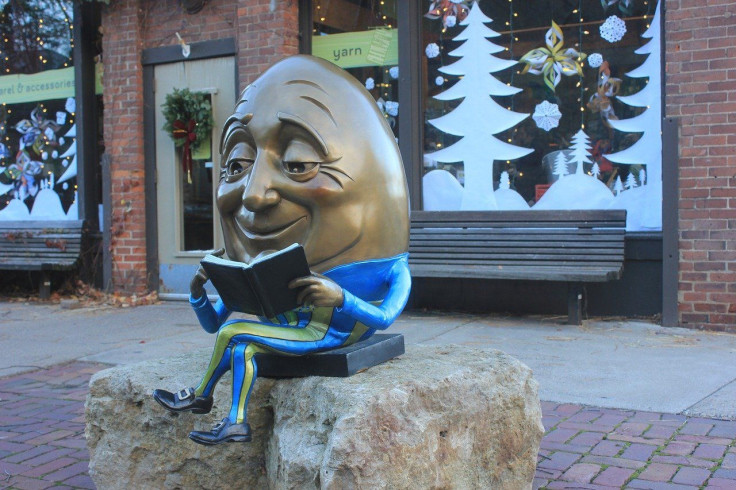Nursery Rhymes Can Help Teach Children And Adults How To Prevent Head Injuries: Researcher
KEY POINTS
- "Humpty Dumpty" isn't the only nursery rhyme character to experience a fall
- A researcher had a closer look at nursery rhymes that featured fall-related injuries
- Parents can use nursery rhymes to discuss safe play: researcher
Can popular nursery rhymes be used to help parents teach their kids about safety? It could have benefits for both the young and old, a researcher says.
Parents use the nursery rhymes we've known for so long as a way to instill good behavior and morals, said Declan A. Patton, a research scientist Children's Hospital of Philadelphia's Center for Injury Research and Prevention and Minds Matter Concussion Program. According to Patton, many of the nursery rhymes' origins have become "lost over time" and some of them are getting criticized for referencing violence.
"For example, six studied nursery rhymes mentioned head injuries but medical opinion was seldom sought for the patients, and when it was the suggested remedy was wholly inappropriate: could all the king's horses and all the king's men have provided the correct treatment after Humpty Dumpty's fall from a wall?" Patton noted in a feature published in the Christmas issue of The BMJ.
For the effort, Patton had a closer look at seven nursery rhymes that reference fall-related head injuries, featuring adults, children, animals or even an egg as the injured parties. This includes well-known nursery rhymes such as "Humpty Dumpty," "Jack and Jill," "Ring a Ring o' Roses" and "Five Little Monkeys," The BMJ noted in a news release.
In "Jack and Jill," for instance, wherein "Jack fell down and broke his crown," Patton noted that Jack's head injury "could have been avoided" if he just wore a helmet. It could also provide "insights into sex-based differences in head injuries," The BMJ noted.
"Five Little Monkeys" also showcases common injuries related to falls from springy surfaces such as beds and trampolines, while "Ring a Ring o' Roses," where "we all fall down," showcases falls from a standing height. According to Patton, children singing the nursery rhyme "should be at low risk of head injury, but they ought to perform it on energy-absorbing surfaces for extra safety."
And of course, in "Humpty Dumpty," the famous egg "had a great fall." This famous rhyme had actually inspired the use of chicken eggs to study the "biomechanics of head injuries in humans."
However, the insights provided by these nursery rhymes aren't restricted to young children and the lessons they can learn on safety. In "Goosey Goosey Gander," for instance, an old man was taken "by his left leg" and thrown down the stairs. Another version of it with an additional verse even mentions that "he nearly broke his back."
Each year, millions of adults 65 years and older experience falls, the U.S. Centers for Disease Control and Prevention (CDC) noted, adding that only less than half of them would consult a doctor. Patton noted that half of the older adults who fall down the stairs actually sustain a head injury. The CDC advises older people who fall and hit their heads to see their doctor right away to make sure that they didn't incur a brain injury.
Patton noted that such nursery rhymes can be used by parents to discuss safe play and how to prevent such head injuries. Further, just like with "Humpty Dumpty," they can also contribute to the understanding of head injuries.
Authors of new nursery rhymes should bear such head injury risk factors in mind, Patton noted.
"In this way readers both young and old can be taught the importance of safe play and occupational hazards and thereby reduce their chances of a head injury," the researcher said.

© Copyright IBTimes 2025. All rights reserved.






















